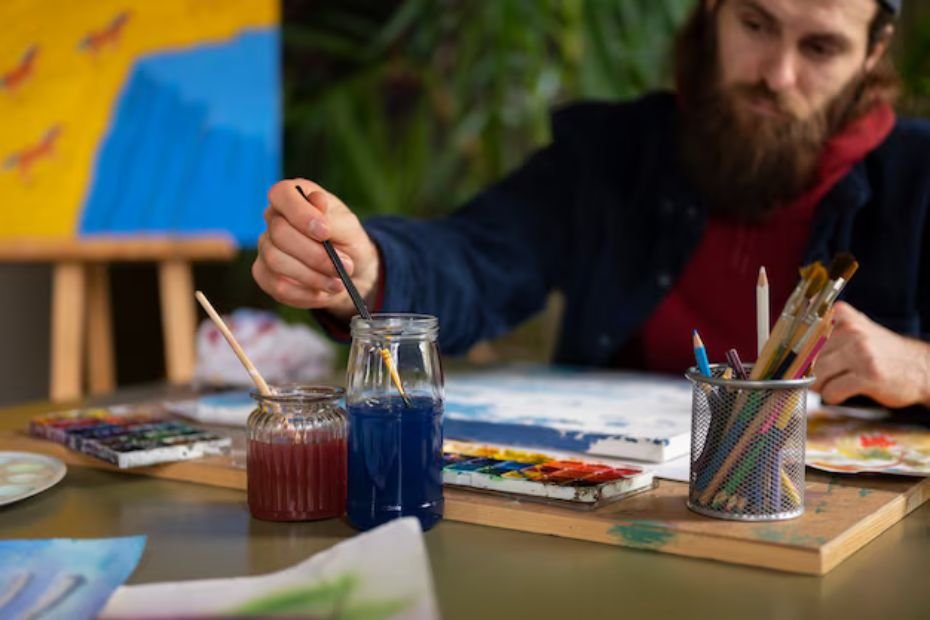Arts education plays a vital role in the holistic development of students in schools. It encompasses various forms of creative expression, including music, dance, theater, visual arts, and design. While core subjects like math, science, and language arts are essential, arts education is equally important for fostering creativity, critical thinking, and emotional intelligence among students. This article explores the significance of arts education, its benefits, and how it contributes to the overall growth of students.
Understanding Arts Education
Arts education refers to the teaching and learning of various artistic disciplines within a school setting. It includes subjects such as:
- Visual Arts: Drawing, painting, sculpture, photography, and digital media.
- Performing Arts: Music, dance, theater, and drama.
- Media Arts: Film production, graphic design, and digital storytelling.
Integrating these disciplines into the curriculum helps students express themselves creatively and develop a deeper understanding of the world around them.
The Creative Process
At the heart of arts education is the creative process, which involves exploration, experimentation, and problem-solving. Students learn to think outside the box, take risks, and embrace failure as a part of their growth. This creative mindset not only enhances their artistic abilities but also translates into other academic areas.
Benefits of Arts Education
Arts education offers numerous benefits for students, including:
1. Enhances Creativity
Engaging in artistic activities allows students to explore their imagination and express their thoughts and feelings. This creative outlet helps them develop unique ideas and solutions, which is invaluable in today’s innovative job market.
2. Improves Academic Performance
Research has shown that students involved in arts education tend to perform better academically. The skills gained through the arts, such as critical thinking and discipline, positively impact their performance in core subjects.
3. Builds Emotional Intelligence
Arts education encourages students to express their emotions and understand the feelings of others. This emotional awareness fosters empathy, resilience, and strong interpersonal skills, which are essential for building healthy relationships.
4. Encourages Collaboration
Many arts projects require teamwork and collaboration. Students learn to communicate effectively, share ideas, and work towards a common goal. These skills are crucial for success in both academic and professional settings.
5. Develops Cultural Awareness
Through arts education, students explore different cultures and perspectives. They learn to appreciate diversity and develop a sense of global citizenship, which is vital in our interconnected world.
Arts Education in Schools
Integrating arts education into school curricula is essential for fostering creativity. Here’s how schools can promote arts education effectively:
1. Curriculum Integration
Schools should integrate arts education into the core curriculum rather than treating it as an isolated subject. For example, teachers can use art to teach concepts in science or history, making learning more engaging and meaningful.
2. Provide Resources and Funding
Access to quality art supplies, instruments, and facilities is crucial for effective arts education. Schools should seek funding and partnerships with local art organizations to provide students with the resources they need to explore their creativity.
3. Encourage Community Involvement
Engaging the community in arts education can enhance students’ learning experiences. Schools can organize events, workshops, and exhibitions that involve local artists and performers, fostering a connection between students and the wider community.
4. Offer Diverse Art Programs
Schools should offer a variety of arts programs to cater to different interests and talents. This diversity allows students to explore various forms of creative expression and find their passion.
5. Train Educators
Providing professional development for teachers in arts education is essential. Educators need training in integrating the arts into their teaching practices and understanding the benefits of arts education.
The Future of Arts Education
As we move into an increasingly digital world, the importance of arts education will continue to grow. Here are some trends to watch for:
1. Technology Integration
The use of technology in arts education is on the rise. Digital art tools, online music platforms, and virtual collaboration spaces provide students with new ways to express themselves creatively.
2. Interdisciplinary Learning
Combining arts education with other subjects will become more common. Schools will increasingly recognize the value of interdisciplinary approaches that incorporate the arts into STEM (Science, Technology, Engineering, and Mathematics) education.
3. Focus on Mental Health
The recognition of the arts as a tool for promoting mental health and well-being will continue to grow. Schools will increasingly integrate arts education into wellness programs, helping students manage stress and express their emotions.
4. Advocacy for Arts Funding
Advocacy for arts education funding will become more important as schools seek to provide comprehensive educational experiences. Community support and policy changes will be necessary to ensure that arts education remains a priority.
Conclusion
Arts education is a crucial component of a well-rounded education system, fostering creativity and personal growth among students. It enhances academic performance, builds emotional intelligence, and promotes collaboration and cultural awareness. As schools continue to prioritize arts education, they prepare students not only for academic success but also for a fulfilling and creative life. By investing in arts education, we empower the next generation to think critically, embrace their creativity, and navigate the complexities of the modern world.elebrate differences and promote academic success for everyone. The journey toward inclusion is ongoing, but with proper training and commitment, we can build a brighter future for students with disabilities.
